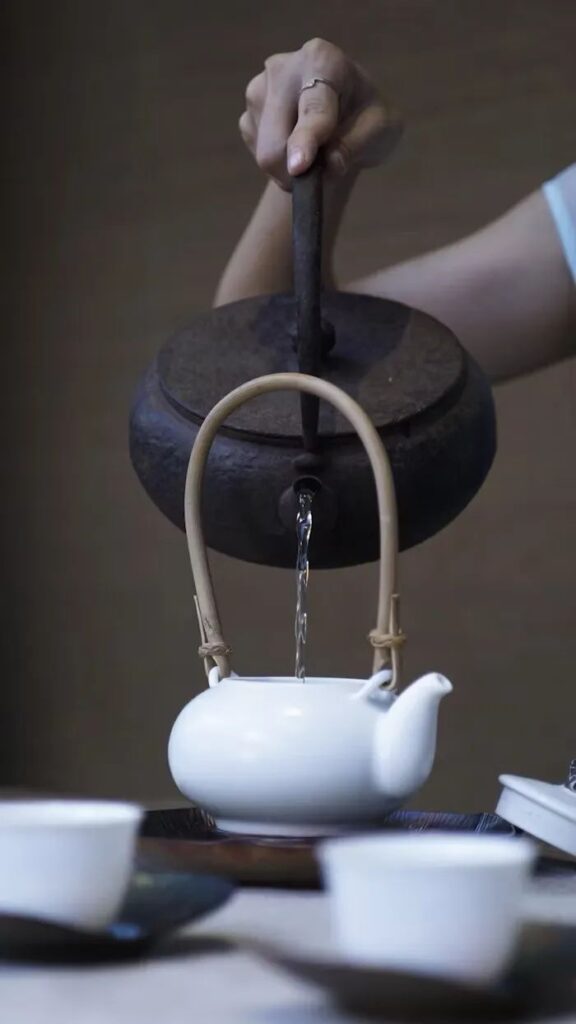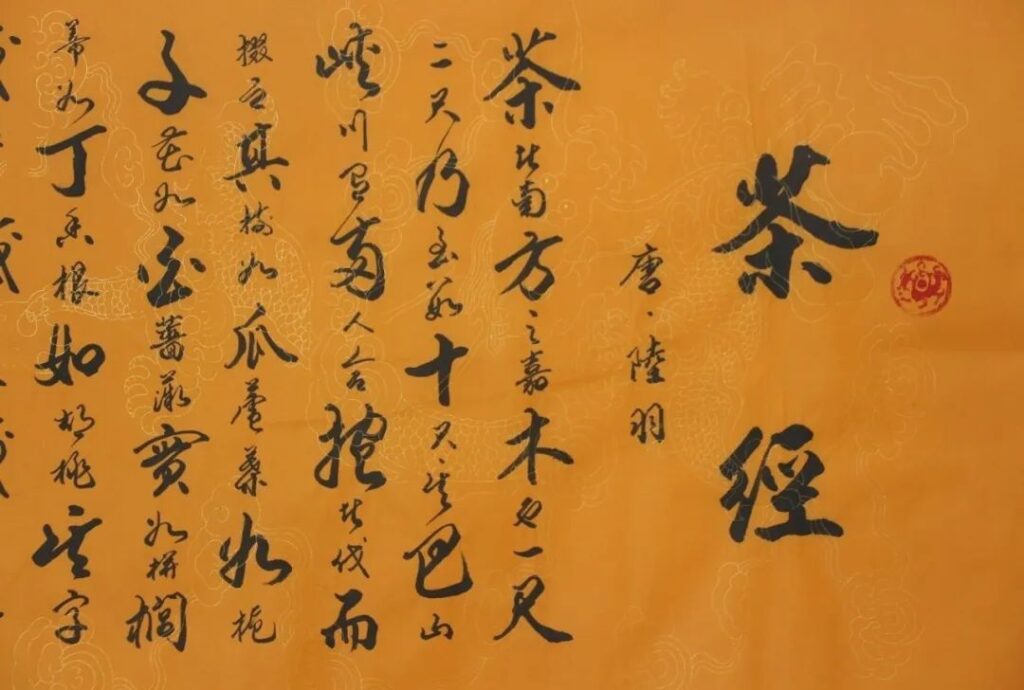Some say that Chinese tea is the taste of time. It has traversed the poetic pages of the Tang, Song, Yuan, Ming, and Qing dynasties, crossed the landscapes of the south and north of the Yangtze River, and in the ordinary days filled with the essentials of life, it has evolved into a taste that is just right, neither too strong nor too weak. Tea is not just a beverage, but a way of life. A cup of green tea in the morning, fresh and refreshing, like the first breath of spring; a pot of black tea in the afternoon, rich and enduring, like the setting sun at dusk; and a bowl of Pu’er tea at night, warm and smooth as jade, carrying the sediment of the years.
From the Longjing of West Lake to the Maofeng of Huangshan, from the Wuyi rock tea of Fujian to the Pu’er of Yunnan, and from the lightness of Junshan Yinzhen to the depth of Anhua dark tea, each tea leaf interprets the character and charm of the land it comes from. Drinking tea is a dialogue with nature and a gaze into one’s own heart. Let us raise this cup of Chinese tea and savor its thousand-year culture and the refreshing aroma that touches the soul. At this moment, mountains and rivers are all within the cup, and time is condensed in the heart. A pot of spring and autumn, half a cup of mountains and rivers – Chinese tea drinking is no longer a simple dietary habit, but an emotional sustenance and a reflection of a way of life. A cup of tea, calm yet wise, light yet full of deep affection, is a gift from the mountains and waters and an accumulation of culture. From brewing tea on cold nights to drinking tea in tea rooms, tea leaves in the hands of the Chinese have been endowed with endless vitality. Tea: The Transformation from Leaf to Culture The history of tea can be traced back thousands of years to the legendary Shennong who tasted a hundred herbs. From its initial medicinal use, to its consumption as a drink, and then to the emergence of the ‘Classic of Tea’ in the Tang Dynasty, tea gradually entered thousands of households and also found its way into poetry, painting, etiquette, and daily life. ‘On a cold night, when a guest arrives, tea serves as wine, with the bamboo stove boiling and the fire just turning red,’ this is the warmth of tea; ‘A monk from Shu embraces the green qin, descending from the Emei peak, with a wave of his hand for me, like listening to the pines of ten thousand valleys,’ this is the poetry of tea. Different teas carry different emotions. The freshness of green tea is the breath of spring; the richness of black tea is the warmth of winter; the steadiness of Pu’er is the taste of the years. Top Ten Famous Teas: A Land and Water that Nurtures Tea China is vast and rich, and each famous tea is imbued with a unique regional atmosphere. They are not only gifts from nature but also the artistic achievements passed down from generation to generation by tea makers. Below are the ten famous teas of China, recognized for their unique stories and flavors. 1. West Lake Longjing (Hangzhou, Zhejiang) Characteristics:• Flat and smooth in shape, with a green color.
• Fragrance like orchids, with a fresh, sweet, and mellow taste, and a clear, bright soup color. Culture: • Known as the ‘Empress of Green Tea,’ Emperor Qianlong once listed it as ‘Imperial Tea.’ 2. Dongting Biluochun (Suzhou, Jiangsu) Characteristics: • Leaves are curled like a snail, covered with white hairs, with a rich and unique aroma, and a floral and fruity scent.1. Biluochun (Dongting Mountain, Jiangsu)
• Sweet and mellow taste with a lasting aftertaste. Culture: Nurtured by the unique soil and water of Dongting Mountain, it has a thousand-year heritage and is known as a “precious tea of the world”. 2. Huangshan Maofeng (Huangshan, Anhui) • Tea leaves resemble a sparrow’s tongue, with visible white hairs and a yellow-green, oily luster. • The soup color is apricot green, with a sweet and fresh taste, and tender, even leaves. Culture: Born in the misty depths of Huangshan, it integrates natural elegance with the essence of tea art. 3. Xinyang Maojian (Xinyang, Henan) • Tea buds are delicate, uniform, and green in color, with a bright soup color. • The taste is fresh, sweet, and mellow, with a lasting aftertaste. Culture: Known as the “paragon of green tea”, it is a masterpiece of traditional Chinese tea processing techniques. 4. Anxi Tieguanyin (Anxi, Fujian) • The appearance is tightly curled and compact, with a sandy green color and a high, natural orchid fragrance. • The taste is rich, sweet, and moist, with a long-lasting aftertaste. Culture: As an oolong tea, it blends the freshness of green tea with the richness of black tea, earning the title of “the Guanyin of tea”. 5. Wuyi Rock Tea (Wuyi Mountain, Fujian) • The appearance is tightly knotted, with a brown-green, oily luster. • The aroma is long-lasting, with a “rock rhyme”, and the taste is rich and mellow. Culture: Best known for its “Da Hong Pao”, it originates from the Danxia landform of Wuyi Mountain, with a unique tea charm that is famous worldwide. 6. Junshan Yinzhen (Yueyang, Hunan) • Tea buds are golden and bright, with visible silver hairs. • The soup color is light yellow and clear, with a fresh, sweet, and mellow taste. Culture: Produced on Junshan Island in Dongting Lake, it is one of the historical representatives of “tribute tea” in China. 7. Keemun Black Tea (Qimen, Anhui) • Tea leaves are tightly twisted and have a dark, moist color. • The aroma is elegant, with fruity and honey scents, and the taste is rich and sweet. Culture: Known for its “Qimen fragrance”, it is a classic among black teas. 8. Pu-erh Tea (Pu’er, Yunnan) • Divided into raw and ripe teas, with a brownish color and various shapes such as cake and brick teas. • The taste is rich, sweet, and smooth, with a mature aroma. Culture: Pu-erh tea is the most collectible tea in China, with its quality improving as it ages. 9. Lu’an Guapian (Lu’an, Anhui) • Tea leaves are evenly shaped and bright green in color. • The soup color is green and clear, with a fresh, rich taste. Culture: As a unique flake-shaped tea, it inherits traditional craftsmanship and is known as the “solitary product among green teas”. Chinese top ten famous teas may vary slightly over different periods and selection criteria. Tea and Life: Pursuing Elegance in the Ordinary Tea is not just a beverage but also a lifestyle. Amidst the hustle and bustle of life, tea reminds us to slow down, to savor the taste of nature, and to listen to our inner voices. Drinking tea is a tribute to nature. Each tea leaf tells a story of a land. From the morning dew of West Lake to the Danxia of Wuyi, every sip of tea is the purest gratitude to nature.Drinking tea is a conversation with oneself. Tea is serene, and as one savors it, the restless heart can find tranquility. In a cup of tea, you may rediscover the balance within your soul.
Drinking tea is a bond of emotion. Whether it’s a gathering with friends and family or a solitary morning sip, tea is always by our side, serving as an emotional bridge between people. With a pot of tea, we honor the years and the future—a vessel carrying a thousand years of culture; a cup of tea, witnessing countless life stories. In China, tea is not just a daily necessity but also a spirit, teaching us peace, composure, and detachment. The way of tea is silent yet deeply ingrained in the Chinese ethos. May you and I find our own joy and elegance amidst the fragrance of tea. At this moment, why not brew a pot of tea, toasting to the passage of time, and sharing the intoxication with the mountains and rivers. END: A pot of tea, in honor of the years, the mountains and rivers, and every day we walk together. Slide to see more~ Thank you to every photographer. Alice Pasqual, Wu Xuan Tu, ORIENTO, Bluesea Tea, Sergey NP, Pip Christierajat Sarki. The image is from pexels.com. With a pot of tea, accompany the years, befriend the mountains and rivers, and find peace within.

